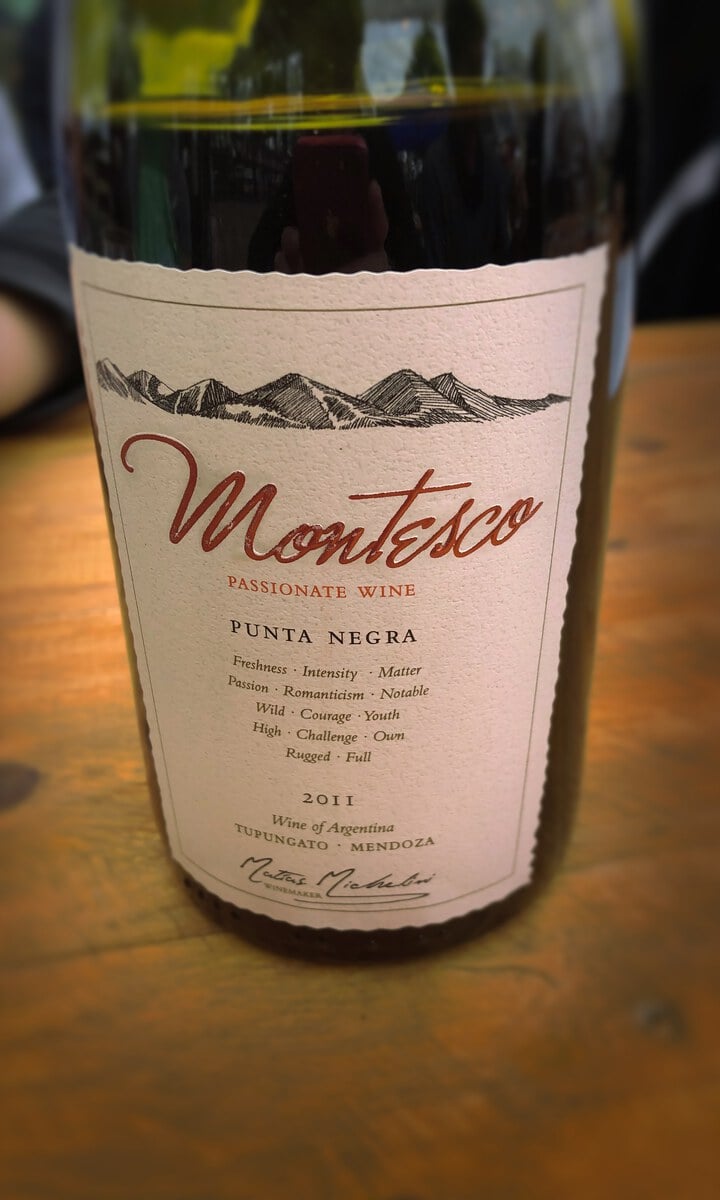Passionate Wine "Montesco Punta Negra" 2011
Pinot noir / SémillonVery elegant, evolved. Berries, coffee, chocolate.
Tasting Notes
On the nose this Pinot Noir bouquet is very graceful shows ripe berry notes along side with elegant toasted aromas of coffee and bitter chocolate.
The Montesco 2011 Punta Negra from Passionate Wine is very elegant and balanced.
The finish is long. It’s spectacular as it is now but can evolve more.

|
|
Passionate Wine |
|
|
Montesco Punta Negra |
|
|
Red & Still |
|
|
Argentina |
|
|
Valle de Uco |
|
|
Pinot noir, Sémillon |
|
|
2011 |
|
|
Learn more
Pinot noir
Red wine grape variety
Pinot noir is a type of red wine grape that belongs to the Vitis vinifera genus. It’s also probable that the name refers to wines produced mainly from Pinot noir grapes. The name comes from the words “pine” and “black” in French. The name pine refers to the grape variety’s tightly clustered, pine cone-shaped fruit bunches.
Link to here... | Derived from 'Pinot noir' on WikipediaSémillon
Wine making grape
Sémillon is a golden-skinned grape grown mainly in France and Australia for dry and sweet white wines. It dominates the sweet wine regions of Sauternes AOC and Barsac AOC due to its thin skin and vulnerability to botrytis.
Link to here... | Derived from 'Sémillon' on WikipediaBarrel size
The barrel size is rather important and matters for two reasons.
-
One; wine notes (also) depends on the chemical compounds in the wood - almost always oak. The “flavours” associated with oak fermenting are vanilla, coconut, cinnamon, clove among others.
-
Two; wine will oxidise in barrels. That is because some oxygen reaches the wine through the cask, via its cracks and joints.
Big vs Small barrel
In a bigger vessel the ratio of wood to wine will be smaller than in a smaller barrel.
The same applies to the ratio of oxygen to wine.
So, wine fermenting in a foudre will oxidise less than wine fermenting in a demi-barrique.
It will also be in contact with less wood and its compounds. Thus wine from a bigger cask will show less of those notes associated with oak fermentation.
Some common barrel sizes are:
- Demi-Barrique : 112L;
- Bordelaise : 225L;
- Bourguigone: 228L;
- American Oak Hogshead: 300L – (79 US Gallons)
- Puncheon 500L;
- Demi-Muid 600L;
- Foudre 2000-12000L;
The barrel "age"
In wine making, the age of the barrel is rather important.
The newer the barrel the stronger will be the influence it has on the wine. It’s easy to understand that as the vintages pass, the wood will become more “neutral” and affect the wine taste and tannin level less.
Since barrels are expensive tools, in wine making there is often a tendency to age a part of the wine in new barrels and a part of it in older barrels. This is a way to keep the cost of the wine making process lower while trying to optimise the amount of flavours and wood quality the wine is exposed to.
Link to here...
